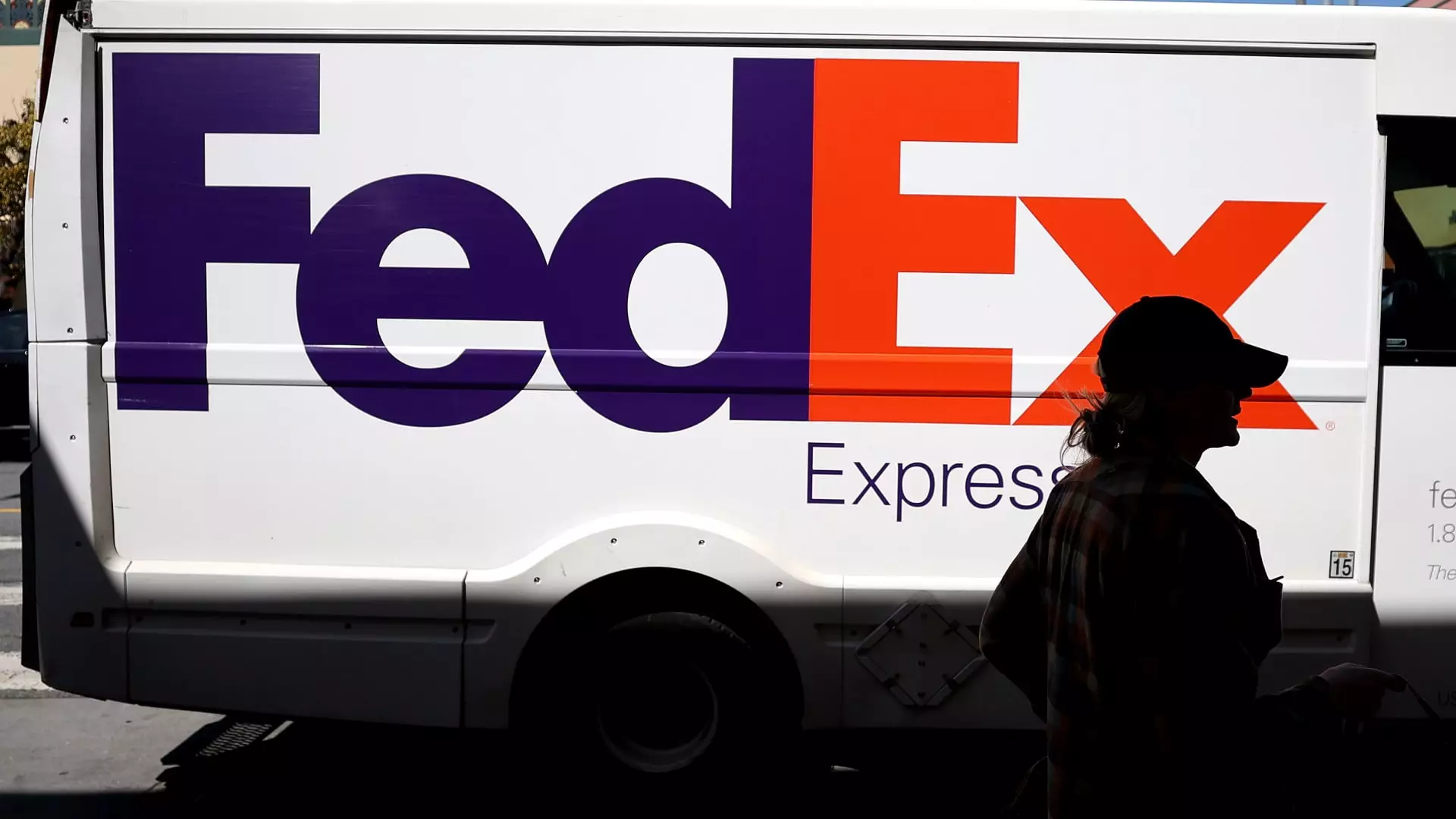FedEx experienced a significant increase in shares, with a rise of over 15% after the company’s latest earnings report surpassed analysts’ expectations. Key figures included adjusted earnings per share of $5.41 compared to an expected $5.35, and revenue of $22.11 billion versus a projected $22.07 billion. These results reflect a positive trend for the company, showcasing its ability to perform well even under challenging conditions.
The company reported a net income of $1.47 billion for the three-month period ending May 31, translating to $5.94 per share. This figure is slightly lower than the $1.54 billion, or $6.05 per share, reported in the previous year. Despite this slight decrease, revenue saw an uptick to $22.1 billion, up from $21.9 billion in the prior year. However, for the full fiscal year, there was a decline in revenue to $87.7 billion from $90.2 billion, signaling a need for continued growth strategies.
FedEx’s decision to lower its capital spending for fiscal 2024 to $5.2 billion, a 16% decrease year over year, reflects the company’s commitment to efficiency and cost reduction. This move aligns with its broader objective to cut $4 billion in costs by the end of fiscal 2025. The implementation of the DRIVE transformation program aims to streamline operations and bolster financial performance. CEO Raj Subramaniam highlighted the success of the program, with $1.8 billion in structural costs eliminated in fiscal year 2024.
Looking ahead, FedEx anticipates low to mid-single-digit revenue growth in fiscal 2025, largely fueled by e-commerce expansion and reduced inventory levels. The company’s Chief Customer Officer, Brie Carere, emphasized the potential of e-commerce to outpace traditional business-to-business growth, pointing to favorable market fundamentals. The consolidation of air and ground services under the DRIVE initiative is expected to yield additional cost savings and operational efficiencies.
Despite its recent successes, FedEx faces challenges, such as margin growth in its Express segment. Margins remained stagnant at 4.1% year over year, prompting a renewed focus on improving segment performance. The loss of a key contract with the U.S. Postal Service to rival United Parcel Service poses a significant headwind for the company, with an expected $500 million impact in fiscal 2025. This loss underscores the competitive nature of the logistics industry and the need for strategic adaptability.
FedEx’s latest earnings report showcases both strengths and areas for improvement. While the company’s financial performance exceeded expectations, challenges like margin growth and competitive pressures loom large. By prioritizing cost-cutting initiatives, focusing on e-commerce growth, and addressing segment-specific challenges, FedEx aims to position itself for sustained success in the evolving logistics landscape. Investors, analysts, and stakeholders will closely monitor the company’s progress as it navigates both opportunities and headwinds in the coming fiscal year.

